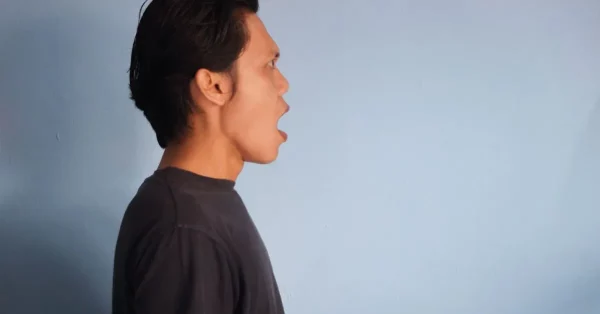When individuals have trouble producing speech after stroke, they may be recommended to pursue expressive aphasia treatment. Expressive aphasia, also known as Broca’s aphasia, is a relatively common language disorder among stroke survivors.
People with expressive language disorders have problems producing words. Speech-language pathologists (SLPs) are able to provide personalized expressive aphasia treatment, which may include a number of exercises and activities focused on regaining the ability to produce language.
This article outlines the causes and symptoms of expressive aphasia, followed by a detailed description of what expressive aphasia treatment may entail. Please use the links below to jump straight to any section:
- Understanding Expressive Aphasia
- Symptoms of Expressive Aphasia
- Tips for Communicating with Someone with Expressive Aphasia
- Rewiring the Brain to Treat Expressive Aphasia
- Expressive Aphasia Treatment Options
Understanding Expressive Aphasia
Aphasia refers to a class of communication disorders that occur when there is damage to the areas of the brain primarily involved in language, particularly damage to Broca’s area and Wernicke’s area. Due to their location, these areas of the brain are likely to be impacted following a left-hemisphere stroke or traumatic brain injury.
When the language centers of the brain become damaged, individuals may have difficulty accessing information within the brain needed to control various aspects of communication. This may include spoken and written language expression, as well as language comprehension and reading.
When Broca’s area becomes damaged, individuals often struggle specifically with spoken and written language expression. This condition can be referred to as Broca’s aphasia or expressive aphasia.
While expressive aphasia can be a stand-alone condition, it can sometimes overlap with receptive or fluent aphasia (Wernicke’s aphasia). When this occurs, individuals may have difficulty with language expression and comprehension, a condition known as global aphasia.
Symptoms of Expressive Aphasia
Expressive aphasia often manifests as a difficulty with language production. However, this can look different for everyone.
Here are some symptoms that someone with expressive aphasia may exhibit:
- Uses effortful speech, or can’t speak at all
- Expressive language deficits
- Utters short sentences or single words repeatedly
- Has difficulty with grammar and using conjunctions
- Reads well but may struggle with writing
Individuals with expressive aphasia may know what they’d like to say, but struggle with converting ideas into words. When expressive aphasia is severe, the person may not speak at all or only utter single words repetitively. Sometimes, the single words they do use are not the words they intended to say.
There are a number of other speech disorders that survivors may experience after stroke, such as dysarthria and apraxia of speech. However, these are motor speech disorders involving difficulty moving the mouth and tongue coordinately. Alternatively, expressive aphasia is a language disorder, affecting the linguistic skill of expression.
Tips for Communicating with Someone with Expressive Aphasia
Learning how to communicate with an individual with expressive aphasia can be challenging for family members, caregivers, and other loved ones. While individuals with expressive aphasia are not able to express themselves effectively with words, they are often still able to comprehend written words and verbal speech. This means they are often good listeners, even if they cannot respond.
Some will assume that those with expressive aphasia have a lack of intelligence due to their delayed, inappropriate, or unintelligible response. However, this is not accurate. Aphasia affects only the ability to communicate through language, not one’s level of intelligence.
With this in mind, here are some tips for talking with individuals with expressive aphasia:
- Be patient. Survivors are often frustrated enough with their communication difficulties and are trying their best to express themselves. Adding additional pressure and irritation can compound their frustration, making it even harder to speak.
- Speak with them normally. There is no reason to raise one’s voice or speak slowly when talking with someone with expressive aphasia, as they likely have no difficulty hearing and understanding what is being said. However, if the person has mixed or global aphasia and struggles with comprehension, it may help to use simpler words and speak at a slower pace.
- Develop empathy. Think of how it feels to have a word or idea at the tip of the tongue, but be unable to remember it. This is how some survivors with expressive aphasia feel when trying to communicate. The person might know what they want to say, but the healing brain is struggling to put it into words.
Expressive aphasia can be challenging for both survivors and their loved ones. It is important to be patient and supportive as individuals with expressive aphasia learn to express themselves again.
Rewiring the Brain to Treat Expressive Aphasia
When an area of the brain has been damaged by stroke, the survivor cannot access the information once stored in that area. In the case of those with expressive aphasia, areas of the brain involved in language, particularly Broca’s area, become damaged. In order to regain the ability to produce speech, the brain must rewire itself. This can allow information regarding the expression of language to be transferred to an undamaged area of the brain.
This rewiring process is known as neuroplasticity. It allows the brain to create and strengthen new pathways in order to become more efficient. Repetitive practice of affected functions and tasks can spark neuroplasticity, encouraging the brain to rewire itself to perform those functions more effectively.
Therefore, almost every expressive aphasia treatment plan will include speech therapy exercises. Consistently practicing these exercises is essential to help heal the brain and improve communication.
Expressive Aphasia Treatment Options
The best way to pursue expressive aphasia treatment is to work with a speech-language pathologist (SLP). They are experts in the areas of communication and language disorders. Following an evaluation, an SLP can help diagnose which type(s) of aphasia an individual has in order to develop a personalized treatment plan.
By practicing the task of speech production, the brain will respond by strengthening new pathways that control speech production. The process is slow and requires consistency long-term in order to create results. But when survivors are diligent, they may be able to make significant improvements or even fully overcome expressive aphasia.
There are multiple expressive aphasia treatment options that speech-language pathologists may use. Here are some of the most common treatment types:
1. Word Retrieval Therapy
Word retrieval therapy is an expressive aphasia treatment focused on connecting words to pictures. This may involve verbally naming a presented picture or using word to picture matching exercises. Depending on the individual’s needs, speech language pathologists may provide cues throughout these exercises, gradually fading the cues as expression skills improve.
2. Melodic Intonation Therapy
Often called singing therapy, melodic intonation therapy is a treatment technique in which survivors use components of music, such as rhythm and pitch, to relearn how to speak. Language skills are typically stored in the logic-focused left side of the brain. By expressing words in a particular pitch and rhythm, as if singing, individuals are able to activate the creativity-focused right side of the brain, rewiring the brain to promote recovery. As survivors improve, they can transition from singing words to speaking.
3. Conversation Therapy
Expressive aphasia can significantly affect an individual’s ability to carry on a conversation. Through conversation therapy, speech language pathologists analyze how an individual’s behavior affects conversation. They can then provide feedback and introduce adaptive strategies to improve the individual’s verbal and non-verbal communication during conversations. Common conversation partners, such as a spouse, may also be highly involved in this type of expressive aphasia treatment.
4. Constraint-Induced Language Therapy
Constraint-induced language therapy (CILT) is a highly intensive expressive aphasia treatment in which survivors focus on using only verbal expression, rather than relying on non-verbal skills, writing, or drawing to communicate. A main tenant of CILT is massed practice, as individuals are often recommended to practice CILT at least 2-4 hours per day. For this reason, those with severely limited expressive language are usually not advised to use CILT until their verbal expression skills improve.
5. Technology-Based Therapies
While working directly with an SLP is strongly recommended, there are a number of technology-based therapies that can be used to supplement therapy sessions. These treatments are usually engaging, which can motivate survivors to practice their speech therapy exercises more consistently.
For example, the CT Speech & Cognitive Therapy App contains over 100,000 scientifically-based speech exercises that individuals can practice independently. It can also assess the survivor’s skill level to provide appropriately challenging exercises, automatically adjusting the difficulty of exercises as the survivor improves.
Want to learn more about the CT Speech and Cognitive Therapy App? Get Started Here.
(Link opens a pop-up for uninterrupted reading.)
Since neuroplasticity is stimulated through consistent and repetitive practice, working on therapeutic exercises both during and outside of therapy is essential for optimal improvements. Working with a speech language pathologist is strongly recommended to develop a customized therapy plan and learn which types of expressive aphasia treatment may be most effective for an individual’s specific needs.
Optimizing Expressive Aphasia Treatment
Expressive aphasia occurs when there is damage to the portions of the brain involved in speech production, particularly Broca’s area. Individuals often exhibit effortful speech and struggle with speaking and writing.
This does not mean the person has lost their intelligence. It simply means their brain needs extra time to retrieve the right words. Fortunately, a consistent speech therapy exercise plan may help individuals improve their expressive language skills.
Recovery requires consistency and diligence, so it is important to practice therapeutic exercises on a regular basis. If necessary, invest in speech therapy apps to encourage recovery, even outside of therapy sessions. Although expressive language recovery may not happen overnight, there is always hope for improvement through neuroplasticity.
Still have questions? Check out our recent article to learn the difference between expressive (Broca’s Aphasia) vs receptive aphasia (Wernicke’s Aphasia).










